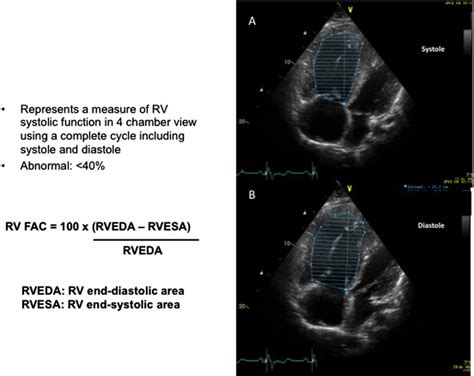lv fractional area change | advanced critical care fractional area change lv fractional area change Fractional area change extends the principle of fractional shortening into two dimensions, evaluating the change in the cross-sectional area of the LV between systole and .
Mākslīgais intelekts un datu zinātne biznesa vadībā (6 KP) Grafisko saskarņu prototipēšana (DatZ1105) Zinātniski pētnieciskā darba metodoloģija (DatZ5016) kopija 1. Mikro un nanotehnoloģijas (Fizi7007) kopija 1. Lāzertehnikas komponenti (MašZ5005) kopija 1. Cietvielu fizika (Fizi5002)
0 · ultrasound fractional area change
1 · fractional ejection area change
2 · fractional area change fac
3 · fractional area change equation
4 · fractional area change echocardiography
5 · fractional area change calculator
6 · fractional area change
7 · advanced critical care fractional area change
Advertise. Top. Price: $2750.00 | Model Year: 2022 | A hardtail cross country hybrid with women-specific saddle and grips. Approachable mid-step frame, four sizes, one color: satin light green. It's the most affordable electric bike model from Liv, is sold through dealers, and comes with a two-year warranty plus lifetime frame.
Fractional area change. A similar technique to measure LVEF is fractional area change (FAC). Like LVFS, FAC measures the change in circumferential area of the LV throughout the cardiac cycle–the difference in .
RV fractional area change is a useful tool to assess RV function. NORRE demonstrated that there is a significant difference between men and women with regards values for FAC: for males the .
ultrasound fractional area change
fractional ejection area change
fractional shortening: percentage change in LV internal dimensions between systole and diastole (normal 30-45%) preload: end-diastolic volume (if low think -> hypovolaemia, low SVR, severe AR or MR, VSD) afterload: end .Determine left ventricular function with qualitative visualization of left ventricular function; Determine segmental wall motion abnormalities; Determine ejection fraction (Simpson's disc or . A normal ejection fraction is equal to or greater than 55% for both men and women. An echocardiographer may become quite efficient and accurate at visually estimating left ventricular ejection fraction (LVEF). Fractional area change extends the principle of fractional shortening into two dimensions, evaluating the change in the cross-sectional area of the LV between systole and .
M-mode echocardiography performed on the basic left ventricle (LV) leads to a 1D high-resolution temporal course of the diameter changes of the LV and of the wall thickness of the anterior and posterior LV wall in systole as well .How to calculate Fractional Area Change (FAC). Measure the End-Systolic and End-Diastolic LV EDA. The optimal view is the LVSA view from the mid Transgastric acoustic window. The left ventricular area should be traced in end-diastole and end-systole.What is Fractional Area Change? Fractional area change (FAC) is a measurement that provides an estimate of the global RV systolic function. Remember this is a formula to calculate the % of area change within the RV between diastole and systole.Fractional Area Change. Fractional Area Change measures ejection fraction by comparing the area of the left ventricle when viewing the mitral valve function in the Parasternal Short Axis (PSSA) view during systole and at diastole. The normal range is approximately 35-65%. FAC (%) = (LVEDA-LVESA)/LVEDA x 100
Fractional area change. A similar technique to measure LVEF is fractional area change (FAC). Like LVFS, FAC measures the change in circumferential area of the LV throughout the cardiac cycle–the difference in left ventricular diastolic area (LVEDA) and left ventricular systolic area (LVESA).RV fractional area change is a useful tool to assess RV function. NORRE demonstrated that there is a significant difference between men and women with regards values for FAC: for males the lower reference limit is 30% whereas for females it is 35%. fractional shortening: percentage change in LV internal dimensions between systole and diastole (normal 30-45%) preload: end-diastolic volume (if low think -> hypovolaemia, low SVR, severe AR or MR, VSD) afterload: end-systolic wall stress (rarely used in clinical practice) LV wall thickness: > 1.5cm = LVH, < 0.6cm = LV thinning. Regional Function.
Determine left ventricular function with qualitative visualization of left ventricular function; Determine segmental wall motion abnormalities; Determine ejection fraction (Simpson's disc or area-length method) Determine fractional area change (normal range: 36 to 64%) Determine the descent of the base (≥ 10 mm predicts a normal ejection . A normal ejection fraction is equal to or greater than 55% for both men and women. An echocardiographer may become quite efficient and accurate at visually estimating left ventricular ejection fraction (LVEF). Fractional area change extends the principle of fractional shortening into two dimensions, evaluating the change in the cross-sectional area of the LV between systole and diastole to estimate LV systolic function, rather than just the change in the LV cavity along a straight line (single dimension).
fractional area change fac


fractional area change equation

fractional area change echocardiography
fractional area change calculator
fractional area change
Pārdodas labs BMW E46, Tehniski un vizuāli labā stāvokli, 110Kw ļoti ekanomisks un labs auto, visas ekstras no auto darb
lv fractional area change|advanced critical care fractional area change




























